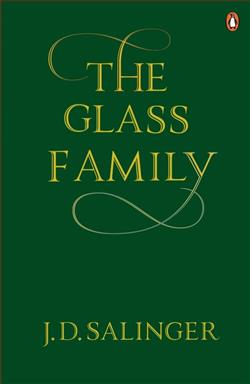Summary

The Glass Family
by J.D. Salinger
Though Salinger is more famous for his novel Catcher in the Rye, many die-hard fans prefer the various short stories and novellas that comprise the Glass Family saga. The main focus of these stories is the inexpliable suicide of the oldest Glass sibling, Seymour. The stories begin in a straight-forward and coherent manner(more like the style of Catcher), but they slowly become more dense and complex, causing reviewers of Salinger's later works to dismiss them as inscrutable plotless messes.
.
Read
The Glass Family on http://kissnovel.net
Martial Peak Reviews
J.D. Salinger's The Glass Family saga is a profound exploration of the human condition, intricately woven through the lives of the Glass siblings. While Salinger is predominantly celebrated for his iconic novel Catcher in the Rye, the Glass Family stories offer a deeper, more nuanced look at themes of existentialism, spirituality, and the complexities of familial relationships. The blurb aptly highlights the central tragedy of the series—the suicide of Seymour Glass, the eldest sibling, which casts a long shadow over the narrative and the lives of his remaining family members.
The Glass Family consists of a cast of characters who are both fascinating and deeply flawed. Each sibling—Seymour, Buddy, Boo Boo, and the younger members—represents different facets of human experience, grappling with their own struggles and aspirations. Seymour, in particular, is a character that embodies the tension between intellectualism and emotional turmoil. His suicide serves as a catalyst for the exploration of themes such as mental illness, the search for meaning, and the impact of societal expectations on individual identity.
One of the most striking aspects of the Glass Family stories is Salinger's ability to create a rich tapestry of dialogue and introspection. The narratives often begin in a straightforward manner, reminiscent of the style found in Catcher in the Rye, but gradually evolve into more complex and layered explorations of thought and emotion. This shift can be disorienting for readers, leading some critics to dismiss these later works as "inscrutable plotless messes." However, this complexity is precisely what makes the Glass Family saga so compelling. Salinger invites readers to engage with the text on a deeper level, encouraging them to reflect on the characters' internal struggles and the broader existential questions they raise.
Thematically, the Glass Family stories delve into the nature of suffering and the quest for authenticity in a world that often feels superficial. The characters grapple with their identities, seeking connection and understanding in a society that frequently alienates them. Seymour, in particular, embodies this struggle; his profound sensitivity and intellectual depth set him apart from his peers, leading to feelings of isolation and despair. Salinger poignantly captures this dichotomy, illustrating how the pursuit of enlightenment can sometimes lead to profound disillusionment.
Character development is another hallmark of Salinger's writing in this series. Each sibling is meticulously crafted, with their own unique voice and perspective. Buddy, the narrator of several stories, serves as a lens through which readers can explore the complexities of the Glass family dynamics. His reflections on Seymour's life and death reveal the deep emotional scars left by the tragedy, as well as the lingering questions about the nature of genius and the burden it carries. Boo Boo, the more pragmatic sibling, offers a contrasting viewpoint, highlighting the tension between idealism and realism within the family. Through these characters, Salinger masterfully illustrates the intricate web of relationships that define the Glass family, each thread contributing to the overarching narrative of loss and longing.
Moreover, Salinger's exploration of spirituality is a recurring theme throughout the Glass Family saga. The characters often engage in philosophical discussions that touch upon the nature of existence, the search for truth, and the role of art in understanding the human experience. Seymour, in particular, is portrayed as a seeker of deeper truths, often grappling with the limitations of language and the inadequacies of conventional thought. This spiritual quest resonates with readers, inviting them to ponder their own beliefs and the meaning of life in a world that can often feel chaotic and uncertain.
In comparison to other literary works that explore similar themes, Salinger's Glass Family saga stands out for its intimate portrayal of family dynamics and the psychological depth of its characters. Authors like Virginia Woolf and Franz Kafka also delve into the complexities of human existence, but Salinger's approach is uniquely American, blending elements of humor and pathos in a way that feels both relatable and profound. The Glass Family stories serve as a testament to the power of literature to illuminate the human experience, offering insights that resonate long after the final page is turned.
Ultimately, The Glass Family is a poignant exploration of the fragility of life and the enduring impact of loss. Salinger's ability to capture the nuances of human emotion and the intricacies of familial relationships makes this saga a timeless work that continues to resonate with readers. While some may find the later stories challenging, those who persevere will be rewarded with a rich and rewarding reading experience that invites introspection and reflection.
In conclusion, J.D. Salinger's The Glass Family saga is a masterful exploration of the human condition, marked by its complex characters, profound themes, and intricate narrative style. It challenges readers to confront their own beliefs and experiences, making it a significant contribution to American literature. For those who appreciate the depth of character and the exploration of existential themes, this collection is a must-read.
























Reviews 0
Post a Reviews: